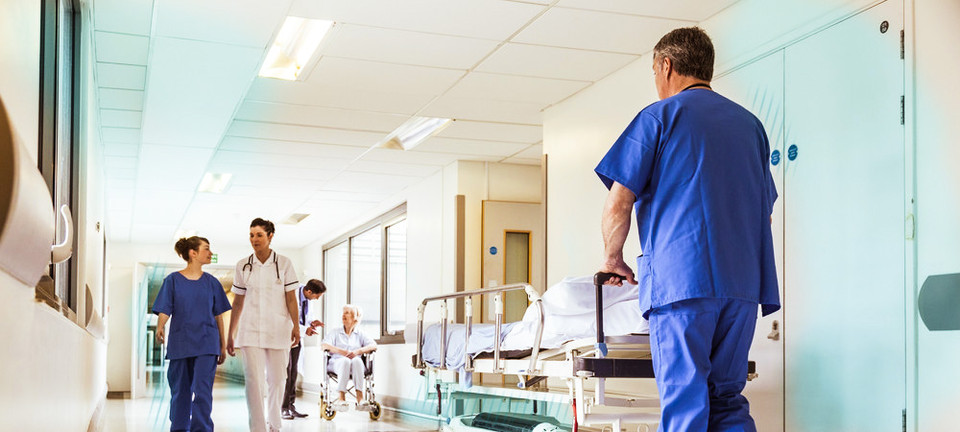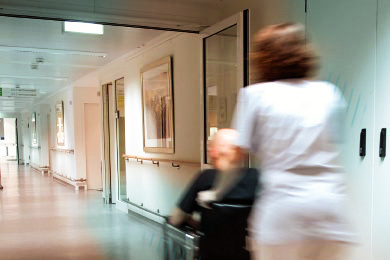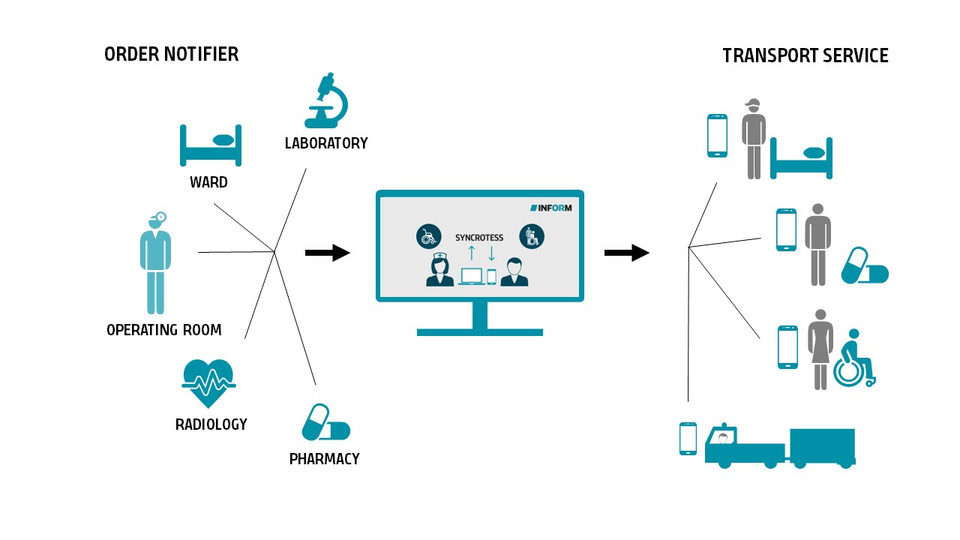Brochure
hospital logistics
Efficient software for optimized processes
Smart control of all logistics processes in hospitals
To enable efficient, economic and adaptable healthcare logistics, effective control of the entire information and workflow chain is required. Employees must be at the center of the organization. The goal is to support and relieve their daily work.

The healthcare logistics system SYNCROTESS organizes the entire process of all types of transport within the hospital and optimally manages in real time:
The software enables uniform and centralized logistics control of active and passive transport resources to ensure the best possible patient care while also operating economically.



With optimized software support, we are well prepared for the logistical challenges arising from the developments in our industry. The quality of care, the efficiency of the processes and the staff motivation have verifiably increased.